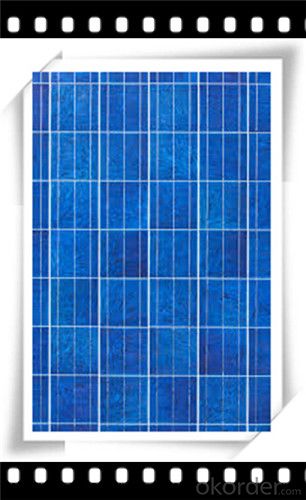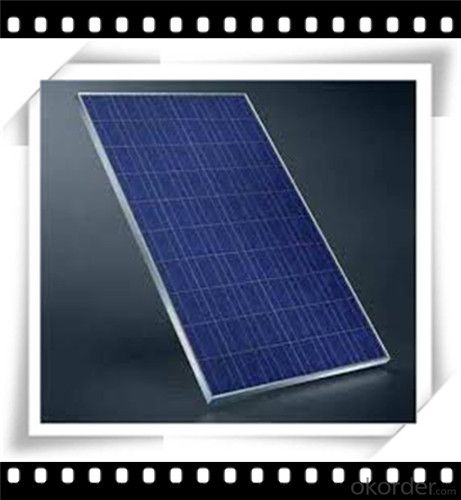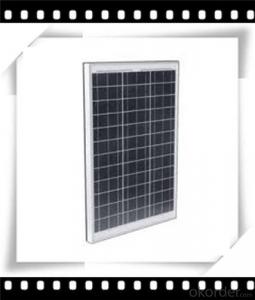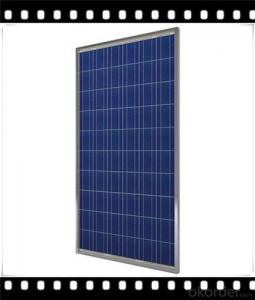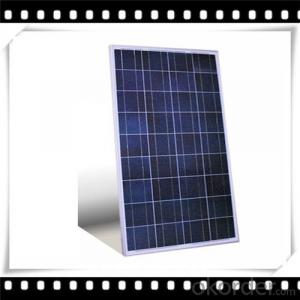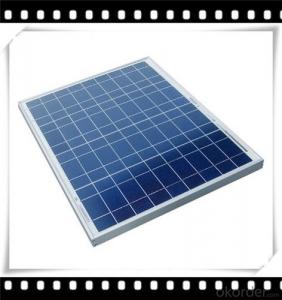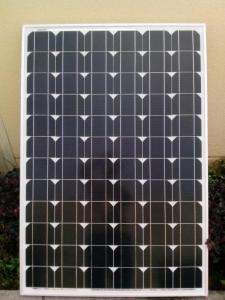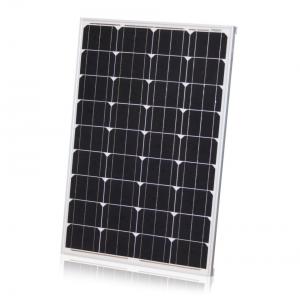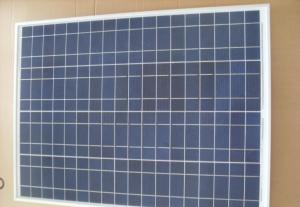20w Solar Panels - 240w Poly Solar Panel Medium Solar Panel Hot Selling Solar Panel CNBM
- Loading Port:
- Qingdao
- Payment Terms:
- TT OR LC
- Min Order Qty:
- 10 set
- Supply Capability:
- 300000 set/month
OKorder Service Pledge
OKorder Financial Service
You Might Also Like
Polycrystalline Solar Modules
CNBM offers a range of small, medium and large polycrystalline solar modules, designed for a range of requirements.
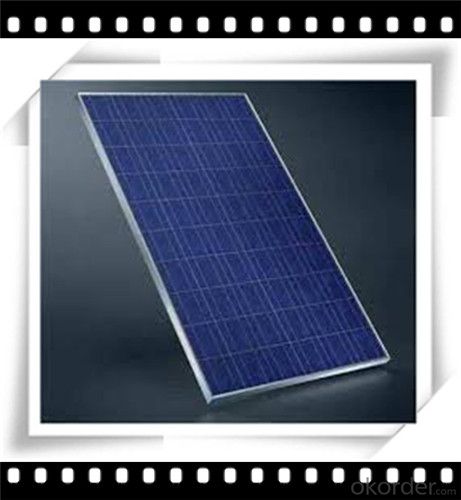
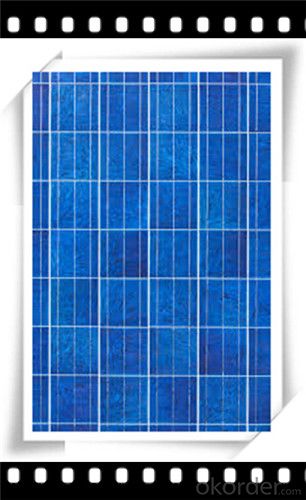
Specifications:
+/-3% |
Polycrystalline silicon solar cells (156 x 156mm) |
60 (10 x 6) |
1650 x 990 x 40 |
25.5 |
Limits:
Operating Temperature | -40~+85? |
Storage Temperature | -40~+85? |
Maximum System Voltage | 1000 VDC max. |
Hail Impact | Diameter of 28mm with impact speed |
Temperature and Coefficients:
NOCT | 48C+/-2? |
Voltage temperature coefficient (%/K) | -0.35 |
Current temperature coefficient (%/K) | 0.05 |
Power temperature coefficient (%/K) | -0.45 |
Characteristics:
Model: | SGM-200P | SGM-210P | SGM-220P |
Max-power voltage Vmp (V) | 29.2 | 29.4 | 29.41 |
Max-power current Imp (A) | 6.85 | 7.14 | 7.48 |
Open-circuit voltage Voc (V) | 36.5 | 36.69 | 36.9 |
Short-Circuit Current Isc (A) | 7.28 | 7.6 | 7.93 |
Max-power Pm(W) | 200 | 210 | 220 |
Model: | SGM-230P |
Max-power voltage Vmp (V) | 29.8 |
Max-power current Imp (A) | 7.72 |
Open-circuit voltage Voc (V) | 37.31 |
Short-Circuit Current Isc (A) | 8.19 |
Max-power Pm(W) | 230 |
STC: Irradiance 1000W/m2, module temperature 25?, AM-=1.5
Poly Crystalline Solar Panels Specifications Range
Maximum Power (Pm) | Dimension | Weight | Operating Voltage (Vmp) | Operating Current (Imp) | Open Circuit Voltage (Voc) | Short Circuit Current (Isc) |
0.45W | 140x80x10mm | 0.08kg | 3.3V | 150mA | 4.6V | 160mA |
1.0W | 162x140x10mm | 0.16kg | 7.5V | 150mA | 10.3V | 160mA |
4.5W | 269x251x23mm | 0.8kg | 16.5V | 0.27A | 20.5V | 0.3A |
10W | 420.1×268.9×22.6mm | 1.92kg | 17.5V | 0.58A | 20.5V | 0.6A |
20W | 425x502x50mm | 3.0kg | 16.8V | 1.19A | 21.0V | 1.29A |
30W | 593x502x22.6mm | 3.9kg | 16.8V | 1.78A | 21.0V | 1.94A |
40W | 655x537x50mm | 5.75kg | 17.3V | 2.31A | 22.1V | 2.54A |
50W | 839x537x50mm | 6.0kg | 17.5V | 2.9A | 21.8V | 3.17A |
65W | 1111x502x50mm | 7.2kg | 17.6V | 3.69A | 22.1V | 3.99A |
80W | 1204x537x50mm | 7.7kg | 17.6V | 4.55A | 22.1V | 4.8A |
- Q: How often do solar panels need to be replaced or repaired roughly? Is it costly to do so?
- This Site Might Help You. RE: How much maintenance do solar panels require? How often do solar panels need to be replaced or repaired roughly? Is it costly to do so?
- Q: I'm trying to charge rechargeable AA batteries with a solar panel. What guage wire should I use to connect the panel to the batteries? Should I use a diode to keep the batteries from overpowering the circuit? If so, what size? My panel is 4.8V 50mA.
- With that size panel, you should be able to recharge either AA battery, or two AA batteries in series. Yes, it would be a good idea to put a blocking diode in series with the panel - anything will do, like a N448. You will want to use NiCd batteries if possible, because they take a trickle charge of 50 mA much better than NiMH (which prefers pulse charging, a more complicated circuit). You can use NiMH if you must. Needless to say, don't try to charge non-rechargable batteries. Also realize that at this charge rate, it will take days, maybe even a week, to charge the batteries, if left out in full sun all day long.
- Q: What is the warranty on solar panels?
- The warranty on solar panels typically ranges from 10 to 25 years, depending on the manufacturer.
- Q: How do solar panels affect the homeowner's insurance policy?
- Solar panels can potentially affect a homeowner's insurance policy as they are considered an added feature or improvement to the property. The presence of solar panels may result in an increase in the insured value of the home, leading to higher insurance premiums. However, some insurance companies offer specialized coverage for solar panels, which may provide additional protection against damage or theft. It is advisable for homeowners to contact their insurance provider to discuss any necessary adjustments or coverage options related to their solar panel installation.
- Q: Can solar panels be installed on metal roofs?
- Yes, solar panels can be installed on metal roofs. In fact, metal roofs are often a great choice for solar panel installations due to their durability and long lifespan. Additionally, the smooth surface of metal roofs makes it easier to secure and position the panels, maximizing sunlight exposure and energy generation.
- Q: hi, i got a pond and i am planning of putting some lights on it during night time. but i want to use solar panels and i have done a bit of research about solar panels and i know how they work, i know that the common voltage to use is 2v so you can use car batteries or deep cycle batteries, but my question is:. what wattage of bulb can you recommend2. how long it would take to drain my battery (can i have it overnight)3. and what wattage of solar panel should i get enough to recharge my battery the next day.hope anyone can help..thanks
- select 2V, and it will tell you how big of a battery bank and how big of a solar panel you need. For my example, I need a 7ah 2V battery and a 20watt panel.
- Q: i need to make a mini-solar car which shouldn't cost much. it's for my science project. for now, i just found out how to make a solar panel using copper oxide, but it does not generate enough power to power up the engine of the toy car [ the small engine they used in the toys, like from TAMIA]
- There are several types of solar panels. If you mean photovoltaic panels for generating electricity, that is a really advanced project that few amateurs are equipped to do. In the long run, it will be a lot cheaper and easier to buy factory made PV panels. You can try building one by sandwiching an array of photovoltaic cells between a sheet of glass or plexiglass and a sheet of aluminum. Remember that this assembly must be able to withstand great heat, and it must be sealed to make absolutely sure it does not leak.
- Q: Got a small project here in a remote location. There is to be a 2 volt deep cycle battery, the equipment to be powered from battery and solar panel to charge battery. The 2 volt battery puts out 55 AH. the max constant power draw from the equipment to be powered is 7.9 watts. Will a 30 watt panel at 2 volts be enough to run this system during sunlight and charge the battery for the equipment to run overnight?And, at 55 AH, how long can I keep a constant draw of 7.9 watts without a recharge?Thanks to all the input!
- o work out the wattage correctly, the panel needs to be sized according to how much power you are going to use. (Later on you're going to need a bit of info on each electrical item you need to be solar powered).
- Q: Main questions: How can I work out the efficiency of a solar panel and how can I work out if the panel is relatively cost-effective? Also what type of solar panels is considered most effiecient?Let's assume that all relative values are available.Secondary question: What type of safety regulations and licenses are required to be fulfiled in order to import solar panels into the EU from non-EU countries?
- The manufacturer of any serious panel should be able to provide an efficiency. That will be the STC power rating of the panel, divided by the area of the panel, divided by 000 w/m^2. But the more interesting figure is cost effectiveness, as you say, which is nothing more than cost per watt for the same class of panels. Most applications are limited by money, not by area.
- Q: Can solar panels be used in conjunction with energy-efficient appliances?
- Yes, solar panels can definitely be used in conjunction with energy-efficient appliances. In fact, combining solar panels with energy-efficient appliances is a great way to maximize energy savings and reduce environmental impact. By generating clean and renewable electricity, solar panels can power energy-efficient appliances, ensuring a more sustainable and cost-effective energy solution for homes and businesses.
Send your message to us
20w Solar Panels - 240w Poly Solar Panel Medium Solar Panel Hot Selling Solar Panel CNBM
- Loading Port:
- Qingdao
- Payment Terms:
- TT OR LC
- Min Order Qty:
- 10 set
- Supply Capability:
- 300000 set/month
OKorder Service Pledge
OKorder Financial Service
Similar products
Hot products
Hot Searches
Related keywords


